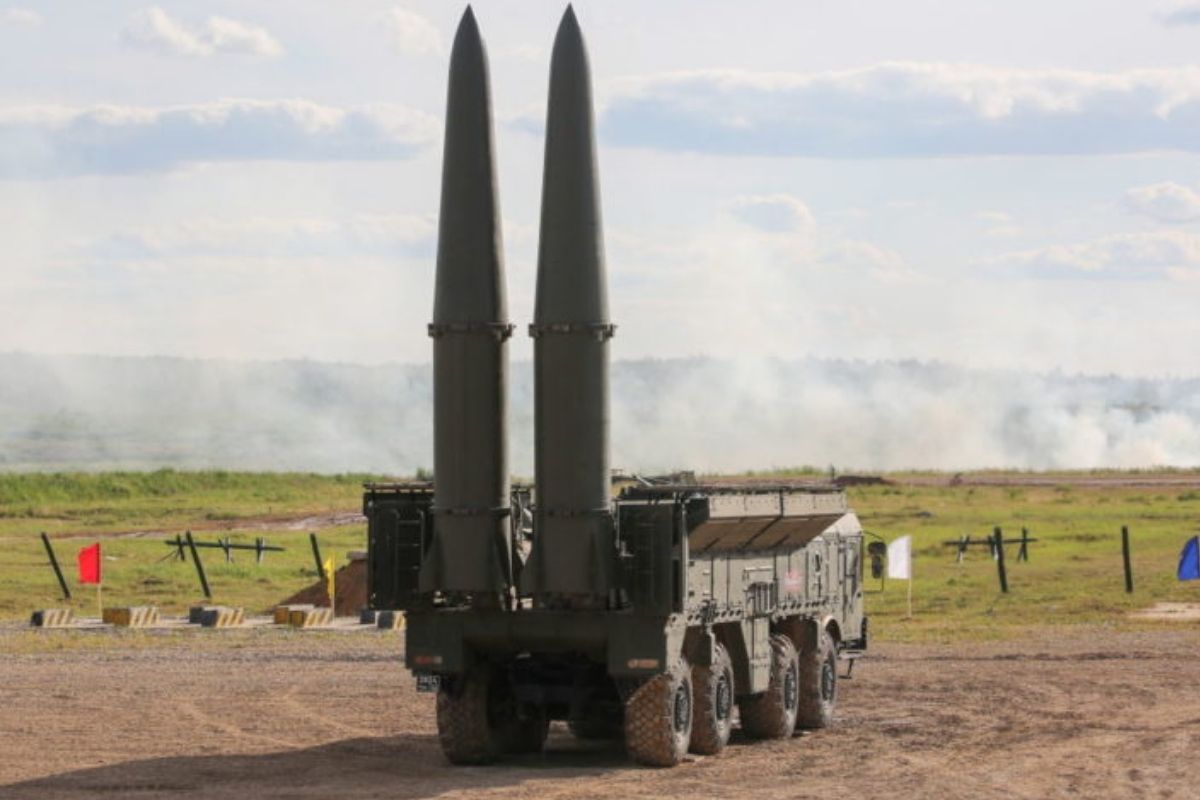The salvo of Iskander-M, Russian ballistic missiles fired into Ukraine contained a surprise: decoys that deceive air defense radars and mislead heat-seeking missiles. This was found by American intelligence authorities.
An Unknown Decoy Has Been Released by Iskander-m
According to an American intelligence official, the Iskander-M missiles are roughly a foot long, fashioned like a dart, and white with an orange tail.
These short-range ballistic missile launches from mobile launchers across the border release the Iskander-M short-range ballistic missiles, an official claimed, when the missile perceives that it is being targeted by air defense systems.
Radio signals disrupt or spoof enemy radars trying to identify the Iskander-M, and each one has a heating source to attract missiles in the event of an attack. Under the condition of anonymity, the official, who was not authorized to publicly speak about intelligence matters, described the devices.
Ukrainian air defense weaponry has had problems intercepting Russian Iskander missiles, which could be explained by the employment of decoys.
According to US government records, the Iskander’s solid-fuel rocket motor allows it to reach targets more than 200 miles away. Two Iskanders can be fired from each mobile launcher before it needs to be reloaded.
Social media users began sharing images of the dart-shaped explosives about two weeks ago. Because of their size and shape, several specialists and open-source intelligence analysts thought they were cluster bomblets.
At the end of his 22 years in the British Army as an explosive ordnance disposal soldier, Richard Stevens said that he was exposed to “plenty of Chinese munitions but I had never seen this.” He then served as a civilian bomb specialist for 10 years in southern Iraq, Africa, and other locations.
For the first time, Mr. Stevens discovered that no one else had seen the explosives before he uploaded images of them on an online forum for bomb disposal experts he founded in 2011.
Stevens said, “That Russia is using that size of weapon — the Iskander-M — and quite a few of them I believe, that’s why we’re seeing this now”. “It’s just that, post-conflict in the past 10 to 15 years, no one has had the opportunity to see this.”
To get beyond anti-missile defenses, the decoys resemble “penetration aids,” a term used during the Cold War to describe decoy weapons used to fool anti-missile systems into thinking they were coming from a different direction.
The use of gadgets in conventional warhead weapons like the Iskander-M has never been documented in military arsenals before.
According to Jeffrey Lewis, a nonproliferation expert at the Middlebury Institute of International Studies in Monterey, California said, “The minute people came up with missiles, people started trying to shoot them down, and the minute people started trying to shoot them down, people started thinking about penetration aids”.
“But we never see them because they’re highly secret — if you know how they work, you can counteract them.”
Because Russia is aware that the decoys would be gathered and analyzed by Western intelligence services, the employment of decoys may indicate some amount of carelessness or urgency by Russian military leadership, Mr. Lewis said.
Moreover, it is exceedingly doubtful that Russia has marketed a variant of the Iskander with these decoys to other countries.
As Mr. Lewis put it, “That suggests to me that the Russians place some value on keeping that technology close to home and that this war is important enough to them to give that up”. “They’re digging deep, and maybe they no longer care, but I would care if I were them.”
He further said, “I think that there are some very excited people in the U.S. intelligence community right now”.
Must go for-
Final Lines
Kindly visit our website if you require any additional information.

